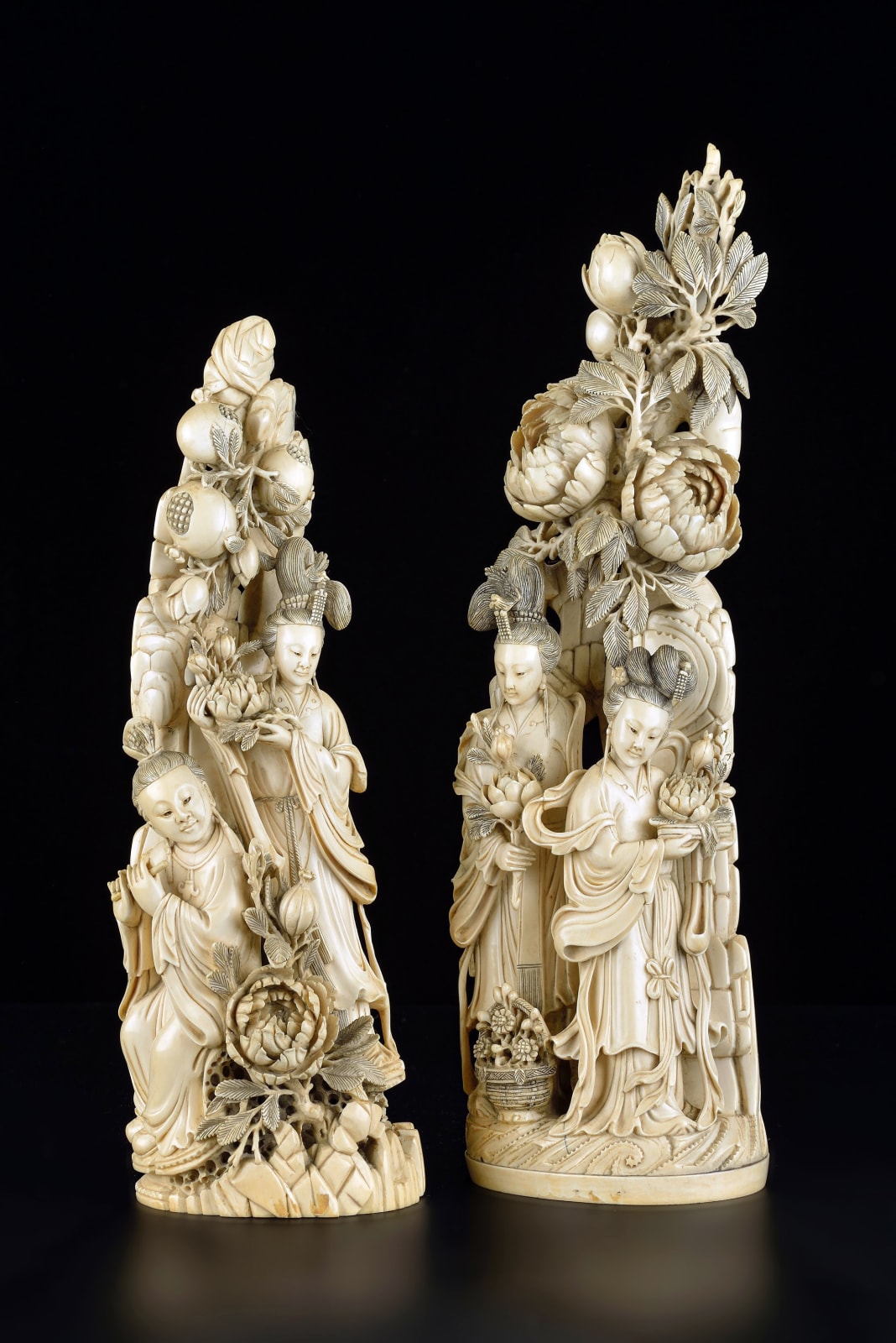Unknown
A beautiful and finely carved pair of Chinese Qing dynasty ivory figurines, each showing two young Chinese maidens, most probably the Jade Maidens who attended at the banquet of Xi Wangmu, each dressed in long sleeved robes with her hair worn up, within a flower-filled rocaille, featuring a pyramidal-shaped cascade of flowers, fruit and associated foliage to include peonies and pomegranates, one showing the two standing maidens each holding peonies and standing either side of a flower-filled basket on a wavy oval-shaped base, the other showing one maiden standing holding a peony while her companion crouches below and plays a musical instrument, with a peony set between them upon a rocaille oval-shaped base
Chinese, nineteenth century, Qing Dynasty
Height of one 46 cm. Height of the other 39 cm.
The subject of these exquisitely carved ivory figurines is assumed to depict the Jade Maidens who attended at the banquet held by Xi Wangmu. One of the oldest Chinese deities, Xi Wangmu, also known as Hsi Wang Mu, was worshipped as Queen Mother of the West and was considered to control the cosmic forces - time and space and the pivotal Great Dipper constellation. It was said that she lived in the Kunlun Mountains in the far West, at the margin of heaven and earth, where in a garden hidden by high clouds, her peaches of immortality grow on a massive tree. This tree was said to have only ripened every three thousand years, at which time she held a special banquet held at her beautiful palace made of precious stone.
The Jade Maidens, also referred to as Yü Nü are the goddess Xi Wangmu’s companions on Kunlun, where they dance and make music, playing chimes, flutes, mouth organs and jade sounding stones. In the ‘Jade Girls’ Song’ the poet Wei Ying-wu referred to them as ‘Flocks of transcendents [who] wing up to the divine Mother’ while in the shamanic Songs of Chu and some Han poems they are described as long-sleeved dancers. Elsewhere they are referred to as ‘women who can perform services to the shapeless and make the spirits come down by dancing’ while a Qing dynasty painting shows a woman dancing before Xi Wang Mu and her court, moving vigorously and whirling her long sleeves.
Not only dancers, the Jade Maidens act as messengers of the goddess and teachers of Taoist mystics. They impart mystic revelations and present divine foods to those blessed to attend the banquet of the goddess. Here they are surrounded by peonies and pomegranates. The peony is called the king of flowers or flower of riches and honours. It is regarded as an omen of good fortune if it flourishes however, it also foretells ill fortune should it fade suddenly. Likewise, the pomegranate appears in many Chinese works of art as a representation of fertility as it has many seeds and like the lotus or gourd as an expression of desire for many sons who will achieve high office.
